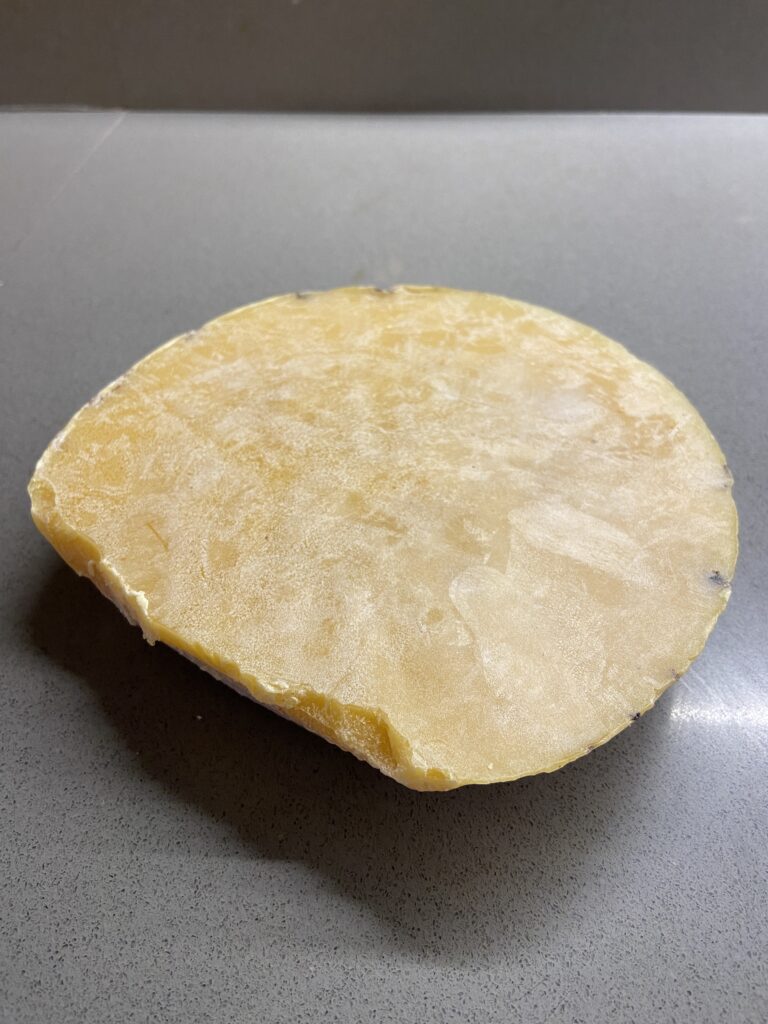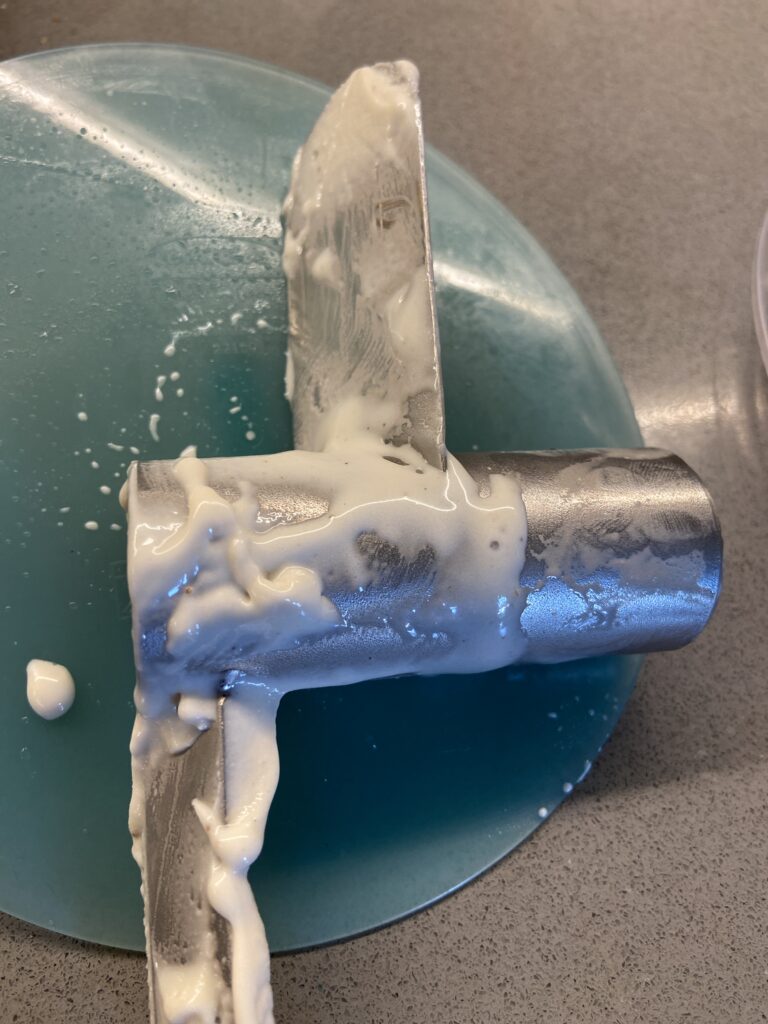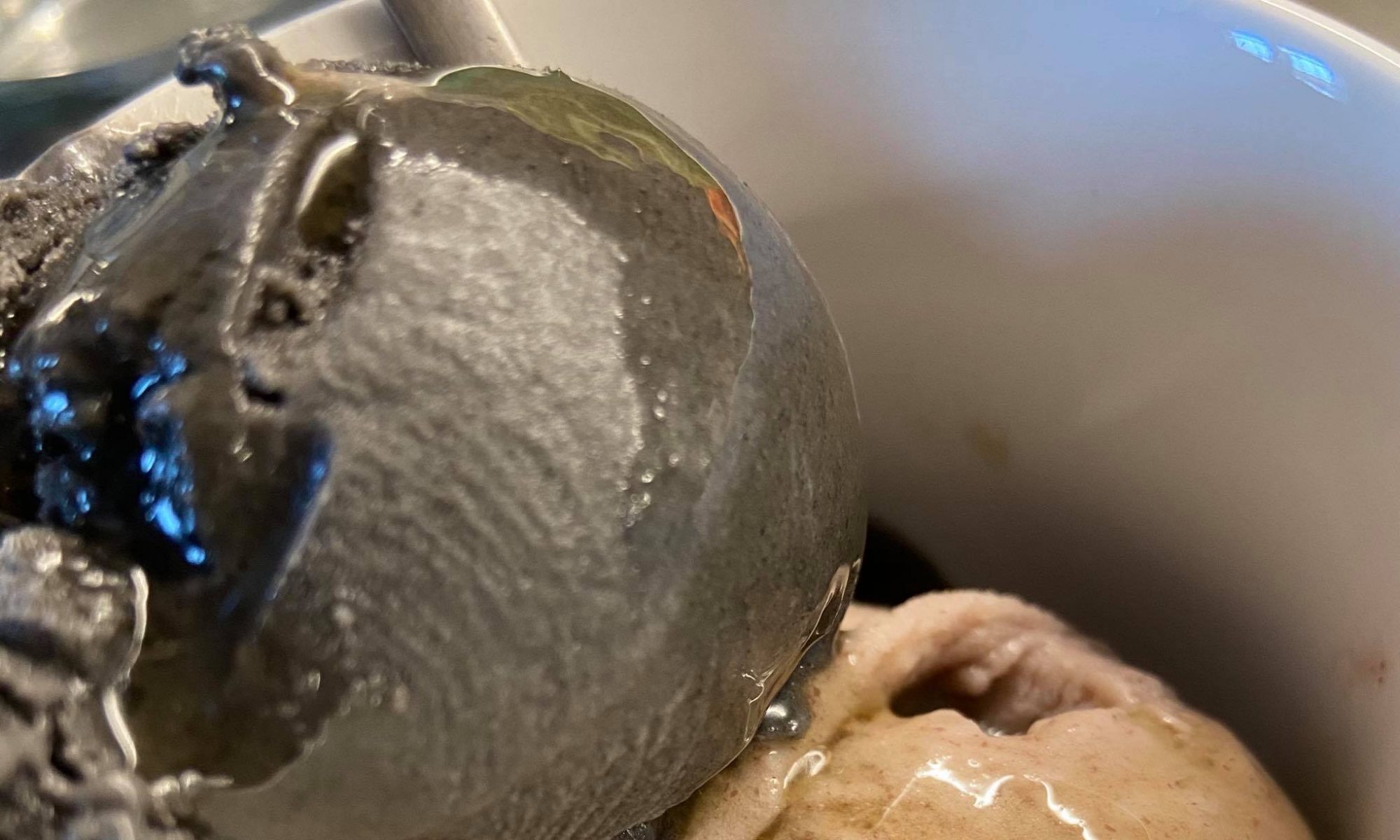The other day I was reading a paper about the use of oleogels in ice cream. Essentially, some molecules can be mixed with low-temperature-freezing fats to make them thicker and therefore more suitable for ice cream, where fat crystals play a very important role in the stabilisation of air. If the fat remains liquid at low temperatures, its network collapses and becomes way less efficient in keep the ice cream structure up. All stuff that I explain in great detail in my ‘Introduction to (vegan) ice cream’ course, in case you are interested :-).
The article mentioned beeswax as one of the possible ‘gelators’ – I know we are out of the vegan ice cream realm, but I happen to have a beehive and collect some honey when the bees make a lot and keep the opercles (the cell lids). Over the years, I collected a block of wax in the cupboard that I have used to make hand cream and candles.
A vegan alternative can be carnauba wax which is sourced from plants. I will definitely try it next. There is some literature already published.

To prepare the oleogel, I heated some olive oil in a bain marie and fully dissolved beeswax in it, stirring well. The oily mixture contained 7% beeswax. I left the mix cool down to a lip balm texture and then used in in place of the coconut oil in my standard white base (for example, the one I published recently). I used refined olive oil to avoid covering any off-flavours but this method opens up the option to use different cultivars of extra-virgin olive oil.

The mix looked very nice and smooth, it cooled to a viscous cream – as I was expecting, and it churned beautifully. And what is important, it has a really nice flavour.

It also melts well, homogeneously so it really looks nice and promising for more experiments.

I am very pleased with the results so far. Now I can use local oil for a variety of interestingly flavoured ice creams, feel a bit less guilty about deforestation and of course have an answer for those people arguing that coconut oil and saturated fats are bad for me. Hooray!


